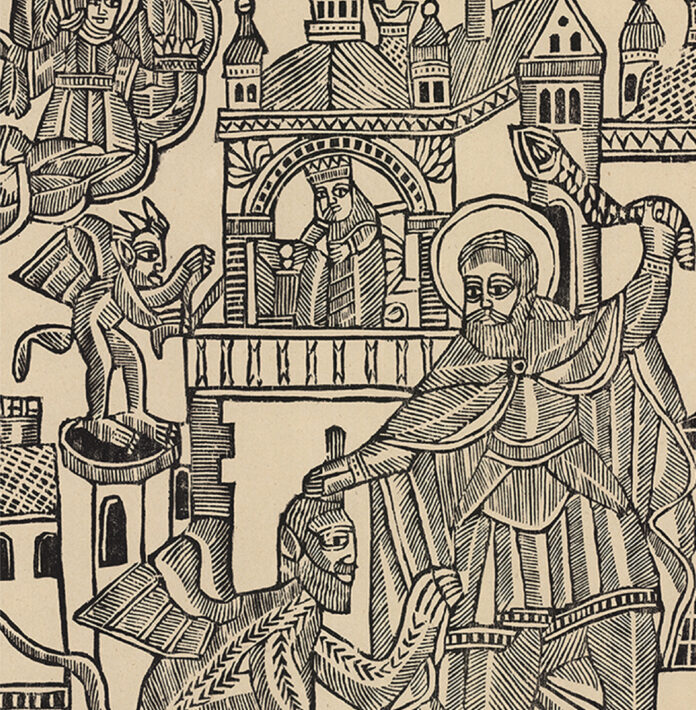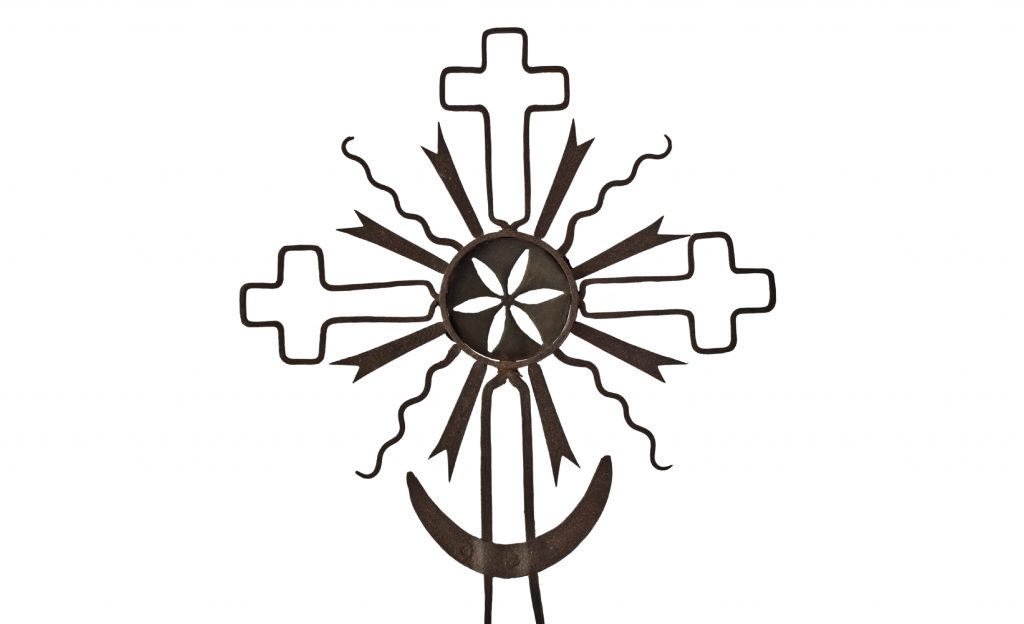
2020 is the Year of Folk Art in Lithuania. Delfi, a major online news source reveals that the National M. K. Čiurlionis Museum of Art in Kaunas is offering three exhibitions showing the unique heritage of the region. The first (September 17 to October 8), is a display of carvings and linocuts by Lithuanian folk and professional artists from the museum’s collection, with traditional texts – typically the word of God, religious stories, narratives of the saints, carved and given life on planks, with both sides carved by means of blades and chisels. The images were printed manually by applying paint on a plank carving and pressing paper onto it with a roller. Once printed, the image was sometimes coloured with paint. A guided tour of this exhibit is available.

A second exhibition on Cross-Crafting continues until the end of December. Lithuanian crosses are a unique phenomenon, the creation of which is included in the list of the Intangible Cultural Heritage of Humanity. They are a synthesis of faith, tradition, artistry and craftsmanship. Lithuanians built crosses in memory of the dead or as symbols of spiritual protection. It is believed that, in pagan times, wooden pillars (the forerunners of crosses) marked significant places at homesteads and burial sites. With the advent of Christianity, the crosses became abundant throughout Lithuania’s countryside.

The third exhibition (also continuing until year-end), “Archaika” – Lithuanian Folk Art from the 18th to the 20th Century, unfolds the nation’s cultural heritage through a selection of the Museum’s collection of of 12,000 ethnocultural objects. The exhibition has clearly defined selection criteria: ancient articles that have remained unchanged for centuries, unaffected by urban culture and industrial influences. They are ritual or household objects, amazing in their complexity of form, technique and creative detail. On display are handmade items of local raw materials (clay, wood, linen, wool) meant for everyday use: ceramic tableware, weaving and spinning tools, fabrics and details of clothing. The oldest surviving headdress of a married woman, a rare ceremonial wedding cup, distaffs and spindles are the keynotes of the exhibition.
With news from DELFI.lt





























